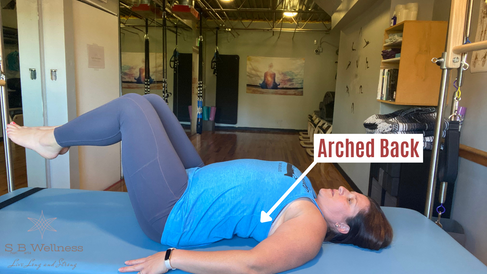Why I Teach in Tabletop
- Shari Barta
- Oct 18, 2021
- 3 min read
Updated: Dec 15, 2021
Tabletop is a common supine leg position that is frequently used during Pilates equipment and mat classes. The goal of the exercise is to challenge the core connection while you use other parts of your body. As a Therapist, Trainer, and Pilates teacher, I LOVE Table top and use it in every class.

Some instructors have moved away from teaching tabletop, claiming it is not a functional exercise. As a 20 year veteran Occupational Therapist (and an anatomy/body mechanic nerd) I disagree. When used correctly, table top challenges the core connection while moving arms and legs. Functionally, this is HUGE!
Take a minute and look around at the people around you. Are they using their core? No. This is why there is such high prevalence of back pain in our society. Our bodies are not supposed to work in segments, we are designed to connect in the middle and work out of it. This is exactly what table top begins to train.
Tabletop: Easy to Get Into, Hard to Maintain
Loving tabletop means I also have a healthy respect for it. Tabletop should not be used lightly and is not a “throwaway” exercise. It is easy to get into but difficult to correctly maintain. If you feel arching in your back or have doming in your stomach, you need to modify and work up to a full tabletop. Don’t worry, I’ve covered that more in-depth below in the video.
When we focus on doing table top right in proper alignment and modifications are used as needed, tabletop is an excellent tool to strengthen the lumbosacral stability, lower core, and hip flexors. When these muscles are strong and connected walking, running, hiking, stair climbing, carrying/lifting, and biking become easier and with less strain on the low back. To be honest I believe finding strength in the lower half of the body can make all functional tasks easier, more efficient and with less strain on the body.
How to Find Tabletop
When working towards a strong table top, it is very important to be aware of your pelvis and core positioning. The pelvis should be neutral at all times. Check in with your core: there should be no doming in your stomach.
Doming in your stomach means your Transverse Abdominus (deep core muscle) is not strong enough to maintain the position.

Check in with your back: there should be no arching off the floor or flattening of the back into the ground. Flattening of the back is a common compensatory posture that prevents the strengthening of the lower core and hip flexors. Arching off the floor puts increased pressure in the low back.
Being aware of the pelvis and core will allow you to start at the right level so you can get the most out of the exercise. Ideally you should be on your back with knees in table top. The back should have the natural curve of your spine and core should be engaged. You should be able to hold this position breathing normally.
How to Find Tabletop
How to Find Tabletop:
Lay down on your back, knees bent and feet flat on the floor.
Take 1 full inhale and exhale to engage the core.
Check into the pelvis and make sure it is in neutral.
Raise one leg with knee bent to make a table with your shin.
Raise other leg to meet the first leg.
Squeeze thighs together to engage midline.
Hold leg position while maintaining a neutral core.
3 Modifications for Tabletop
If you need some help getting to full tabletop with the correct alignment, there are several modifications to build the strength to find and hold the correct positioning:
Single Leg
Alternating table top
Baby tabletop (alternating table top with holds)
Tabletop teaches our body to maintain a strong core connection while moving other body parts. It’s also a strong building block that leads into more advanced Pilates exercises—such as roll over, short spine, corkscrew, and the Hundred, just to name a few.



